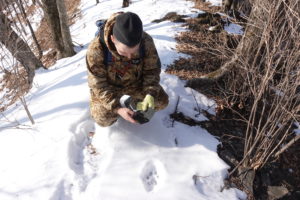WCS in Russia (ANO WCS) want to secure the future for Amur leopards and tigers in Southwest Primorye and neighbouring lands of Jilin Province in China. One way that they can do this is by using scientifically robust and reliable methods to monitor both tigers and leopards so that management decisions can be made with the best possible information for long term Amur leopard conservation.
In pursuit of this aim, WCS in this WildCats funded project has been monitoring populations for nearly twenty years and these evidence-based survey methodologies are demonstrating that Amur leopard and tiger numbers have increased over the past five to ten years, which is a testament to improved law enforcement efforts and better management coming after the creation of Land of the Leopard National Park. The analysis of ungulate records suggests that sika deer populations also continue to increase.
Project activities and key achievements
- 102 cameras placed at 51 locations covering 763.76 km2, resulted in 4,654 camera trap images
- 1,416 photographs were of 24 different Amur leopards and 757 images of 19 different adult tigers all identified using the ExtractCompare programme
- The average leopard density in our study area was 1.4 individuals/100 km2
- The average tiger density in our study areas was 1.17 individuals/100 km2
- Long-term data sets show that leopard and tiger numbers are slowly increasing in this region
- Relative abundance indices demonstrate increases in sika deer, the primary prey species
- 9 cameras were stolen (8% of total) resulting in a loss of data in addition to equipment
Support this work by donating to WildCats Conservation Alliance

Amur leopard monitoring © WCS

Field biologist inspects leopard tracks along a ridge in southwest Primorye. WCS©

